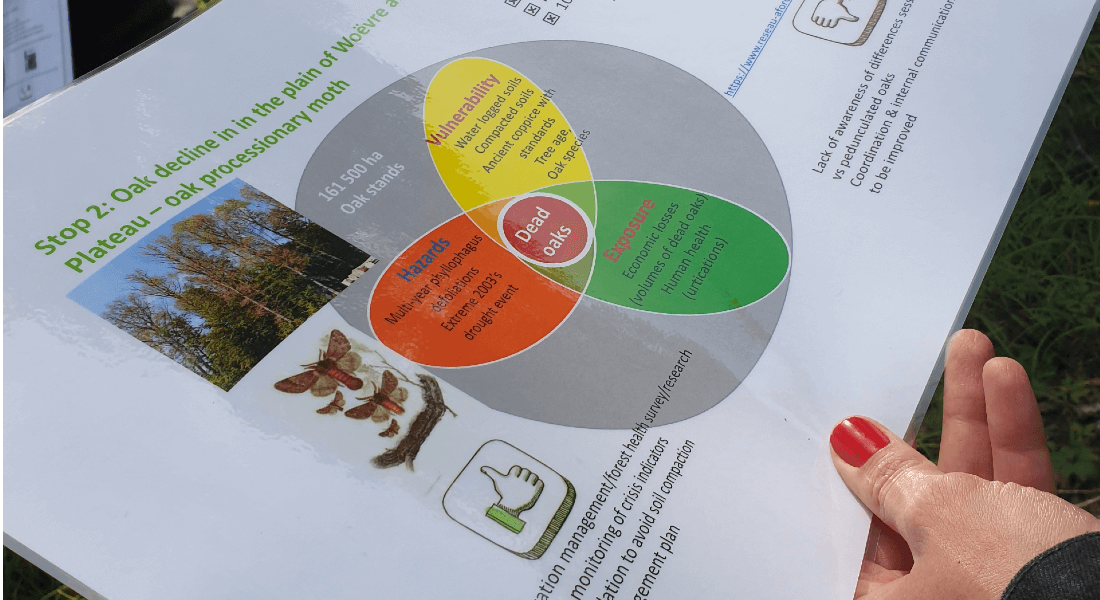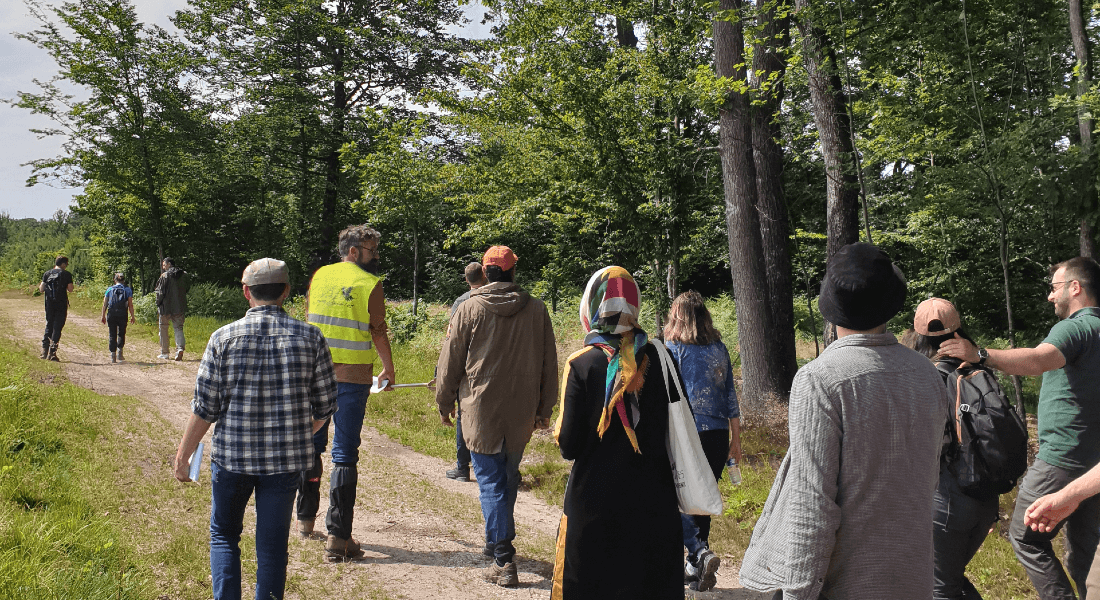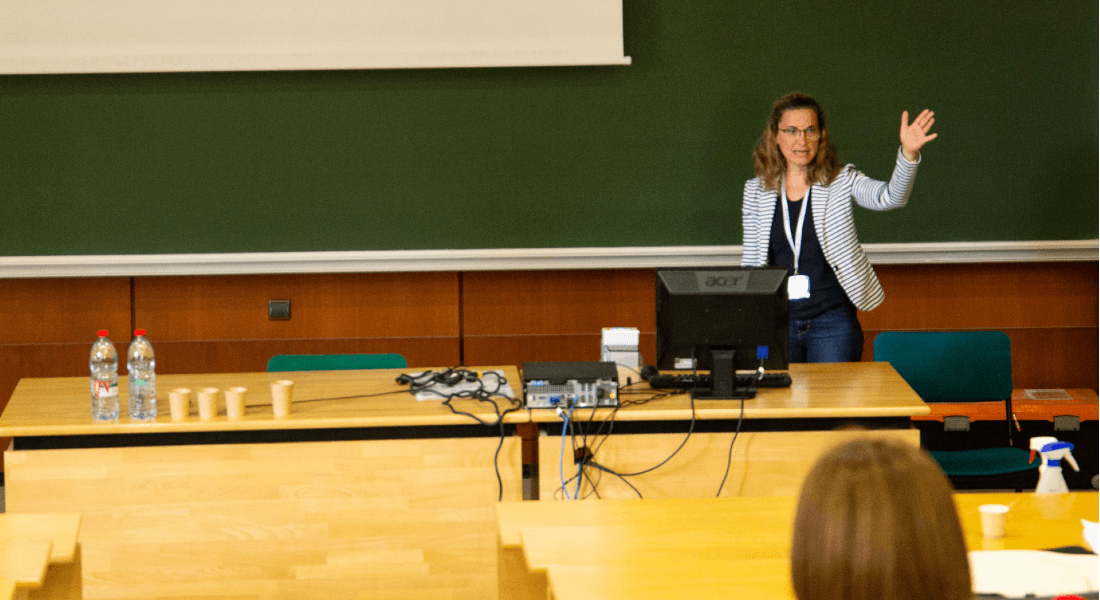How to see the forest and the trees
Learnings and impressions from PhD student Mar Moure at the 2022 annual conference by the Risk Analysis division of the IUFRO global network for forest science cooperation.

IUFRO Risk Analysis conference:
”Socio-ecological conflicts in forest management: risks of (not) adapting?”
PhD student Mar Moure attended this year's conference with the Risk Analysis division of the IUFRO global network for forest science cooperation. The conference took place from May 31 to June 2, 2022 in Nancy, France.
By: Mar Moure
Contrary to the old-time saying, the people I met at the Risk Analysis conference can very well see the forest for the trees. Not only that, they look down to inspect the soil and the root systems; they look up to search for any signs of tree decline in the canopy, and beyond the canopy, out into space, to have satellites look back at them from their advantageous perspective.

The Risk Analysis conference, however, intended to widen the idea of the forest as a closed natural system. The conference’s aim was to analyze the forest as an interconnected and often contested space where natural processes and human interests converge. When people are brought into the equation, we find that the forest is both a physical place and a symbolic representation in people’s minds.
we find that the forest is both a physical place and a symbolic representation in people’s mind.
These representations shape people’s expectations of what a forest should be like and how/if they ought to be used. As a result, both the physical integrity of forests and our idea of them are at risk because of the multiple increasing and conflating pressures on forests (e.g. changing rainfall patterns, more frequent and intense wildfires, diseases and pests, soil degradation, and overexploitation).

‘Adapting’ means seeking to moderate or avoid harm, or exploit beneficial opportunities stemming from actual or expected trends. We, or the forest, can modify our own conditions to become less sensitive to the new environment (i.e. reducing vulnerability), or we can adjust the environment around us so that the new conditions do not affect us (reducing exposure). The scientists speaking at the Risk Analysis conference provided insights from their own research in both these areas.

However, the way in which we adapt forests to climate change can also be a source of conflict.
the way in which we adapt forests to climate change can also be a source of conflict.
On the one hand, forests can both help reduce some hazards for people (acting as a buffer, filtrating polluted water, etc.) and become hazards themselves (e.g. wind damage on train lines, or wildfires reaching settlements). On the other hand, people simultaneously have use for intact forests and for their resources, or the land they occupy.
Due to these paradoxes, a good number of presentations at the conference looked into trade-offs of different approaches and mounting uncertainties. And it is this last point that links to my own research: for people transitioning to (agro)forestry from more seemingly vulnerable livelihoods, which uncertainties does this adaptation reduce and which new ones arise?
For someone like me who only recently started seeing forests through a scientific lens, the IUFRO Risk Analysis conference was a good reminder of the intricate depths of analysis that any one subject can reach in science, and the gross (albeit necessary) oversimplified perspective those who are not in the field tend to have.
Event participation was partly funded by the Marie Curie Alumni Association.

Contact
Maria del Mar Moure Peña
PhD fellow
Section for Environment and Natural Resources
marmoure@ifro.ku.dk
